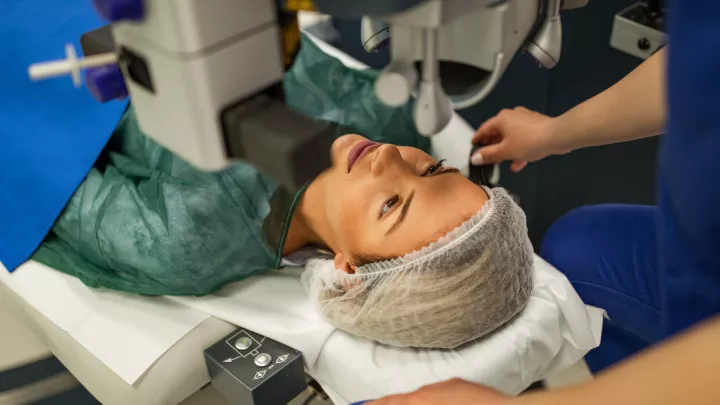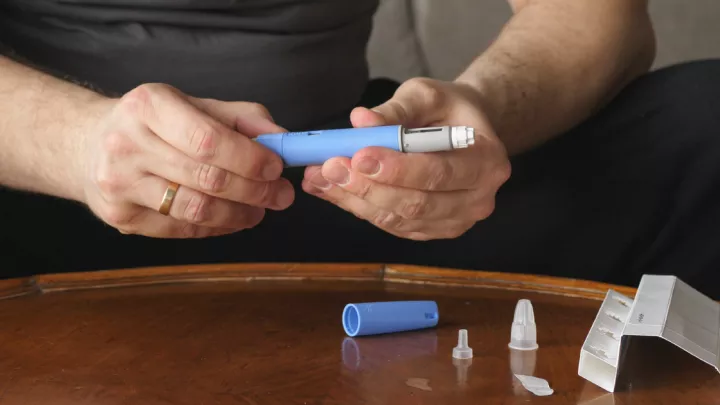What are Intacs® corneal implants for keratoconus?

Keratoconus is an eye disorder that affects the strength and structure of the cornea, leading to reduced vision. Fortunately, advancements in ophthalmology have provided various treatment options, one of which is Intacs® corneal implants.
Understanding keratoconus
Keratoconus is a condition in which the cornea, the clear front surface of the eye, thins and gradually bulges outward into a cone-like shape. This irregularity in the cornea causes symptoms such as:
- Blurred vision
- Glares around lights
- Progressively poor vision that is not easily corrected
Keratoconus can significantly impact a person's quality of life by impairing their ability to perform daily tasks, like driving and reading.
Intacs® corneal implants
Intacs®, or corneal rings, are small, crescent-shaped implants made of polymethyl methacrylate. They are surgically inserted into the cornea to reshape its curvature, reducing the irregular shape and improving vision.
Intacs® are for individuals who can no longer see well with eyeglasses or contact lenses due to their keratoconus. It is not a refractive procedure like LASIK – corneal rings may improve vision and reduce prescription when implanted, but patients often still need glasses or contacts.
“If someone is not able to wear contact lenses, or the lenses aren’t fitting well, corneal rings are a nice option to reduce the irregularity and allow them to see in glasses,” says ophthalmologist Brian Armstrong, MD. “In some cases, people can go back to wearing contact lenses, and they will fit better due to the corneal ring placement.”
Candidates for Intacs® include those who:
- Have 450 microns of corneal thickness at the site of the incision.
- Have decreased eyeglass vision.
- Have keratoconus that is not progressive. For patients with progressive disease, a procedure called corneal crosslinking is available.
- Don’t have other severe ocular disease or inflammation that may lead to rejection of the corneal rings.
- Are age 21 and older.
How Intacs® work
The procedure for Intacs® corneal implants involves a skilled team, including an ophthalmologist who performs this minimally invasive surgery. The ophthalmologist:
- Measures the patient’s cornea and prescription.
- Selects the size and number of corneal rings (up to two rings may be implanted per eye).
- Uses a laser to form a small opening incision and tunnel in the cornea.
- Inserts the corneal ring(s) into the cornea through the tunnel.
- Sutures the tunnel closed.
The process takes around 30 minutes and is performed under topical anesthesia in a procedure room rather than an operating room. The corneal suture is removed about a week later.
Benefits
- Improved vision. Intacs® help to flatten the cornea, reducing astigmatism and nearsightedness associated with keratoconus. This can improve visual acuity and clarity, allowing individuals to see more clearly without relying as heavily on corrective lenses.
- Reversible procedure. Although Intacs® are intended to be a permanent solution, they can be removed or replaced, but only if necessary.
- Minimally invasive and quick recovery. Most patients can resume normal activities within a few days after the surgery.
Risks
While Intacs® are considered safe and effective, and serious complications are extremely rare, some risks are associated with the procedure.
“The biggest risk to be aware of is about 50% of patients will develop deposits within the tunnel where the Intacs® are implanted” Dr. Armstrong says. “But for the vast majority of those patients, those deposits are not visually or clinically significant and do not require any treatment.”
Additional risks include:
- 1.5% of patients will experience infection that can be treated with eye drops.
- 1% of patients will need to have the Intacs® removed due to complications.
Nebraska Medicine cares for patients throughout the region who seek treatment for keratoconus and other corneal conditions. To schedule a consultation with an experienced ophthalmologist, call 800.922.0000.







